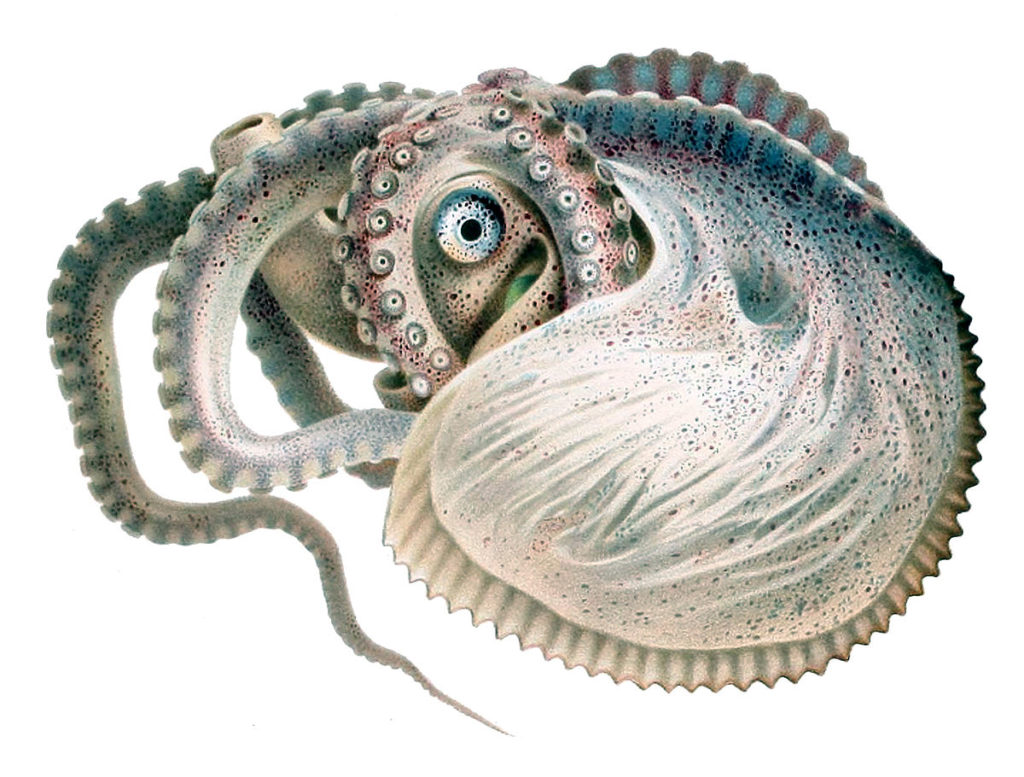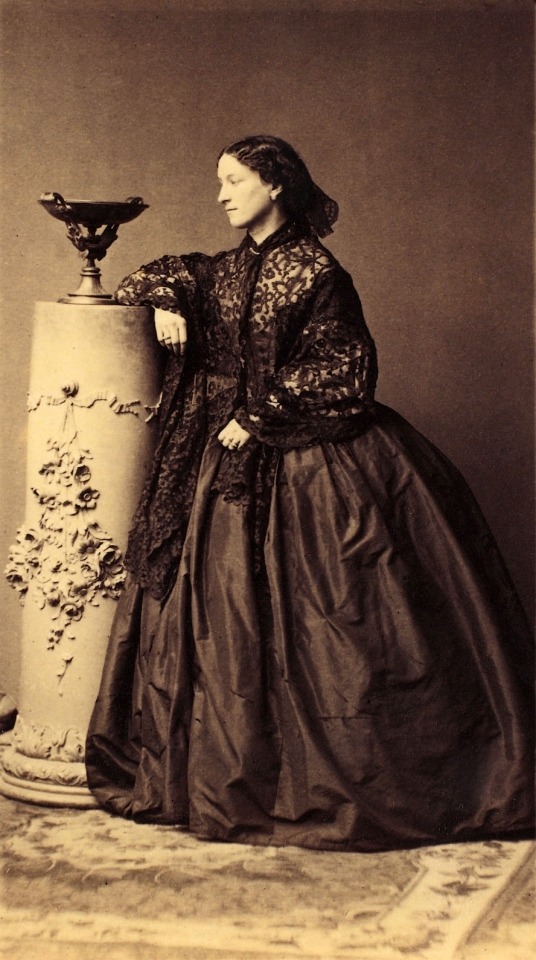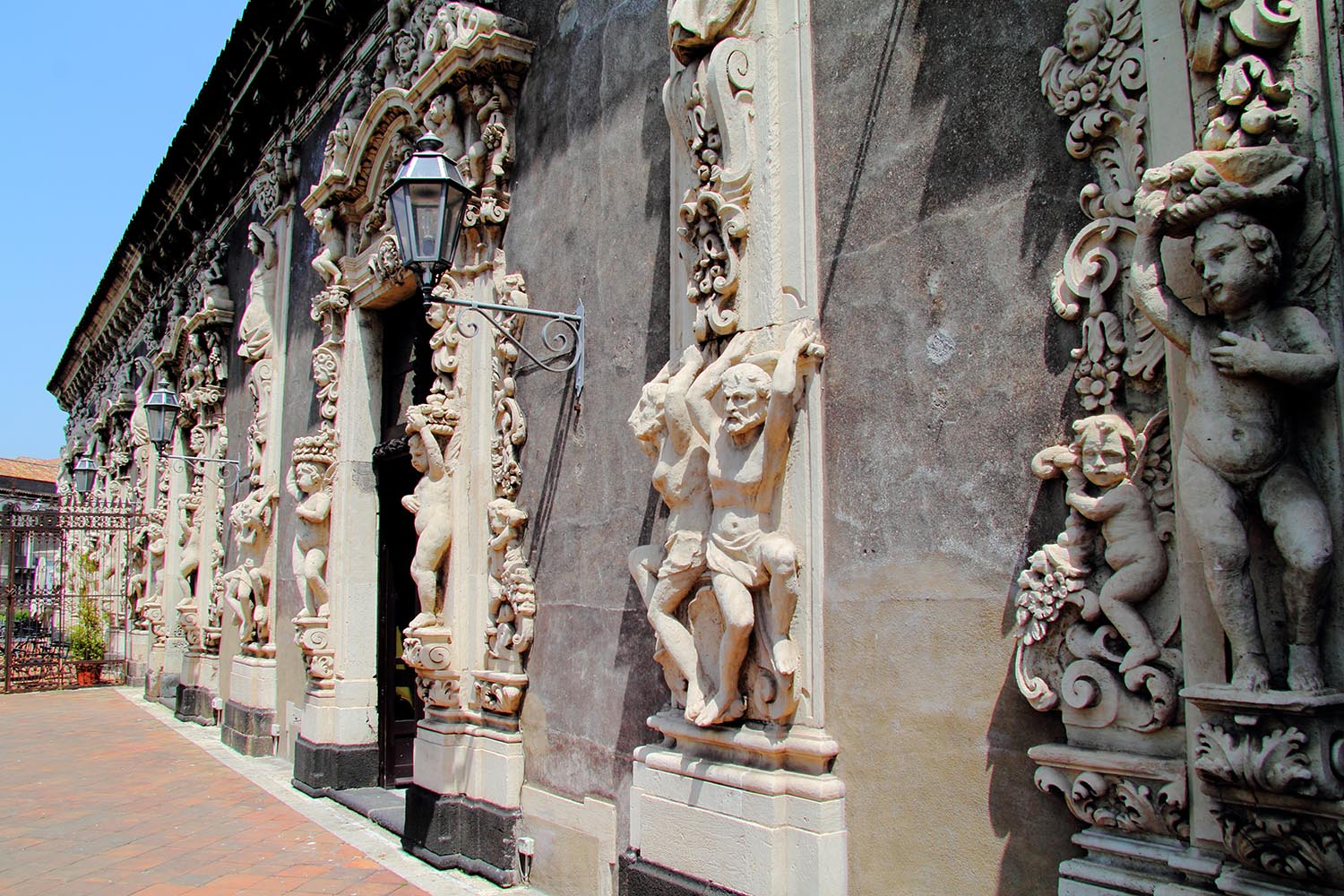Jeanne Villepreux and the birth of the first aquarium in Sicily
The Argonaut Argo is a curious mollusk of the Sicilian seas, not very different from a common octopus. The female lays her eggs inside a very thin shell that jealously guards attached to its own body. At the beginning of the 19th century no scholar had been able to discover the mechanism used by the animal, accustomed to living in the hardly observable sea depths, to obtain this shell. It was in 1839 that Jeanne Villepreux revolutionized the field of oceanography inventing the ideal tool to observe closely the Argonaut Argo and to solve the mystery it kept, that is aquarium.
Jeanne, before going to Sicily and devoting herself in scientific research, was responsible for the realization of the wedding dress of the Bourbon Princess in Paris
THE DISCOVERY. Jeanne Villepreux, born in France and moved to Messina to follow the business of her husband, a British merchant, used her ingenious invention to conduct an experiment. When Jeanne placed a damaged shell inside an aquarium, carefully assembled and set up to recreate the natural habitat, she witnessed an unexpected spectacle. Like a seamstress that makes a beautiful dress, the specimen of Argo slowly began to weave its very light shell, restoring it. A talent that the mollusk shared with Jeanne, who, before going to Sicily and devoting herself to scientific research, was responsible for the realization of the wedding dress of the Bourbon Princess in Paris.

A SCIENCE BIRTH. “I realized that lack of experience was the reason of the divergence of opinions”, Jeanne wrote about the confusion that ruled before her discovery, showing a clear understanding of the essence of the scientific method. Besides, the marine observation technologies applied at the time did not have a level of sophistication comparable to that of other natural sciences. So, her discoveries were internationally acclaimed and described in a French volume published by her in 1839. Her success also reverberated through the dynamic Sicilian community of nature research, whose members were gathered in the Gioenia Academy of Catania. She was the first woman admitted to it.
Next time we see a sea creature into an aquarium, it will be nice to think that this perspective to look at the sea was born almost two hundred years ago thanks to a woman madly in love with Sicilian nature
LOVE FOR SICILY. After spending twenty years in Sicily, Jeanne retired from scientific activity and returned to France with her husband, where she spent the last years of her life. Despite not being as well-known as other contemporary scientists, her contributions to knowledge leave no doubt that she was one of the most important scientific figures of the 19th century in Italy. Next time we see a sea creature into an aquarium, it will be nice to think that this perspective to look at the sea was born almost two hundred years ago thanks to a woman madly in love with Sicilian nature.
A natural Grand Tour

Jeanne’s curiosity and desire to discover and analyze the Sicilian nature, brought her to walk, during over twenty years, “throughout Sicily several times, province by province, collecting natural and antiquity history”. Her passion for collecting was combined with an artistic skill that allowed her to make beautiful paintings, some of which are now on display at the Natural History Museum in Paris. She made her house beautiful and welcoming in this way, an interesting background for meetings with other Sicilian intellectuals that were natural sciences enthusiasts. She told about her excursions in Guide to Sicily, published in Italian in 1842. Although the theme of travel guides was popular ‒ it was the Grand Tour period ‒ Jeanne took this route in an unconventional way. As an insider and extreme connoisseur of Sicilian flora and fauna, she didn’t only described the most interesting destinations to visit in the island, but also outlined real nature portraits on the wild life of the place, in an innovative way for the time. “The work that now comes to light is the most complete and exact among those who in a similar kind are known”, Francesco Aldaresi wrote in the Giornale del Gabinetto Letterario dell’Accademia Gioenia di Catania.
Translated by Daniela Marsala



